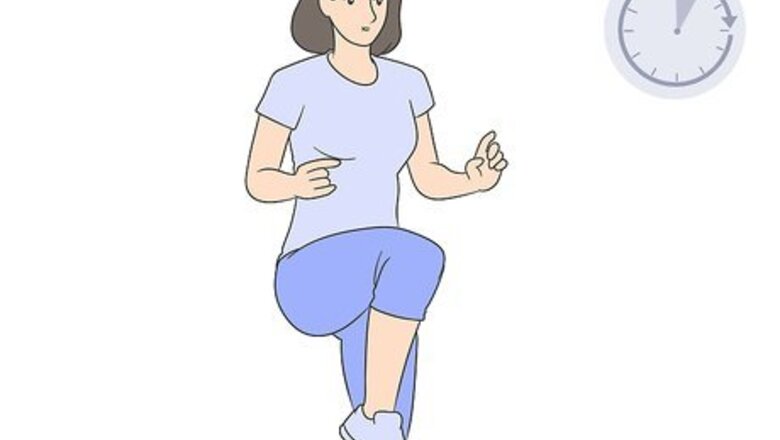
views
Doing the Exercise Safely
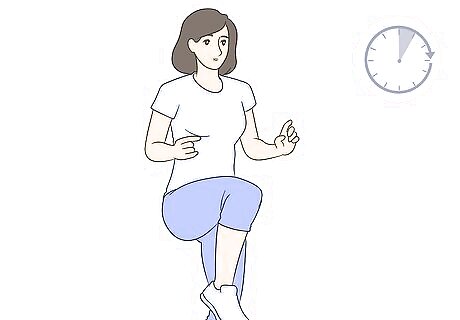
Warm up with 5 minutes of cardio activity. Before you stretch, warm up your whole body with cardio exercise. Choose an exercise that you enjoy. For instance, do 5 minutes of jumping jacks, walking, jogging, dancing, or aerobics to get your blood pumping. If you do static stretches with cold muscles, it actually increases your risk of injury. Always do a few minutes of cardio first.
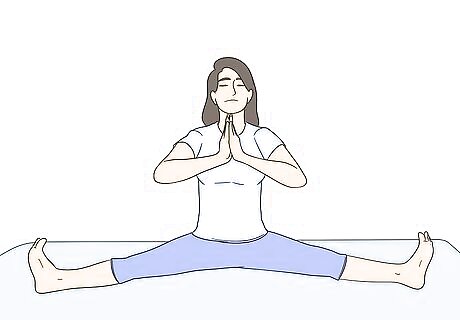
Stretch to protect your muscles from injury. You’ll engage the muscles throughout your body while doing a one-arm handstand, so it’s important to stretch first. Do about 5-10 minutes of stretches to warm up your body. Hold each stretch for 30-60 seconds. Here are some stretches that will warm you up fast: Straddle splits Pike jumps Wrist stretches Splits Planks

Pick a spot with soft flooring or grass because you might fall. It’s easy to fall out of a one-armed handstand, especially when you first start doing them. To help you avoid injury, practice your handstands on a soft floor like carpet or an area of the ground that's covered in grass. You can still get injured if you fall, but softer flooring can minimize your risk of getting hurt. Use a gymnastics mat to protect you in case of a fall. EXPERT TIP Halle Payne Halle Payne Former Level 7 Gymnast Halle Payne began gymnastics at the age of 9 at Buckhead Gymnastics in Atlanta, GA. She began in a Prep-Optional team, then switched over into the Compulsory Junior Olympic Level System at the age of 11. She finished her gymnastics career as a Level 7. Halle Payne Halle Payne Former Level 7 Gymnast Try practicing on a low balance beam. A balance beam makes this trick a bit easier, because the hand that remains down can grip the beam, helping you keep your balance. Choose a beam that's low or directly on the ground for an easy fall. Surround it with padded mats for extra protection if you'd like!
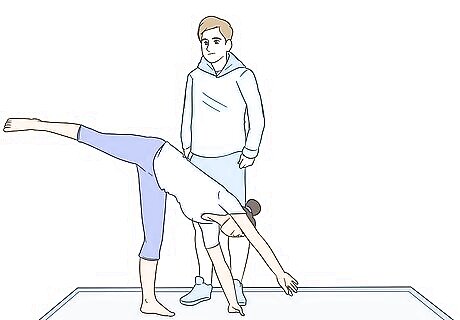
Ask someone to be your spotter. You may fall several times before you master a one-armed handstand. To help you avoid injury, ask a friend or coach to help you. They can provide support and catch you if you fall.
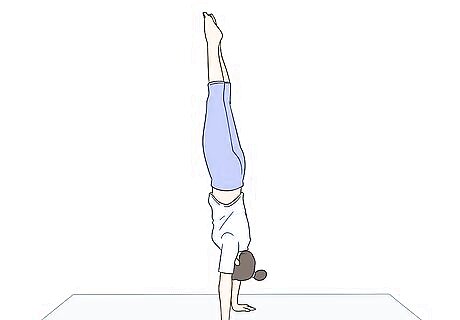
Practice a basic handstand before attempting a one-armed handstand. You can’t do a one-arm handstand until you’ve mastered a regular handstand. Stick to the basic handstand until you can do it easily. Make sure you can hold a handstand for at least 30 seconds before trying to do it on one arm.
Achieving a Handstand
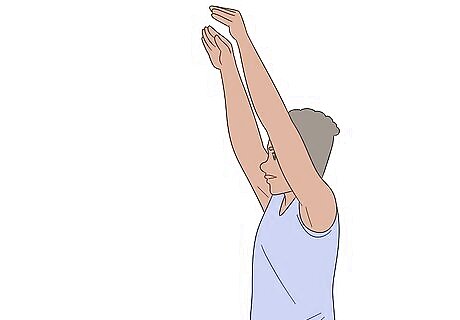
Stand up straight with your arms extended over your head. Stand tall with your legs about hip-width apart and your spine straight. Lift your arms up over your head with your palms facing forward. As you complete the exercise, try to keep your body as straight as possible. Engage all of your muscles to support your frame.
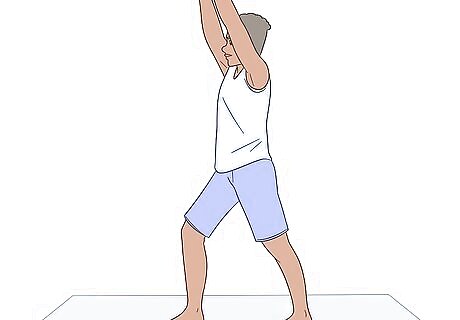
Start with your dominant leg in front. Step out with your dominant leg. Lunge forward, putting your weight on your dominant leg. Keep your arms raised above your head.
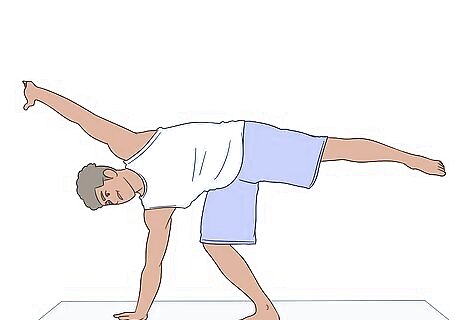
Kick off the floor into a handstand using your non-dominant leg. Push through your non-dominant foot to propel your legs off the floor. Lift your non-dominant leg off the floor first, then bring up your dominant leg in a swift motion.
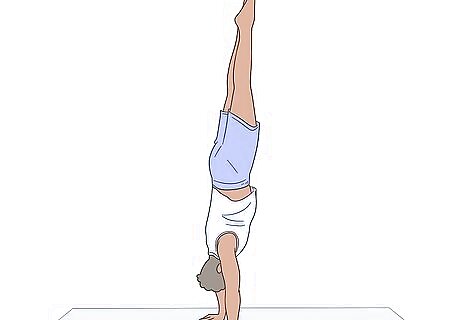
Keep your body in a straight line without arching your back. Engage all of the muscles throughout your body to keep your body straight. This will help you stay balanced on your arms so you don’t fall out of the handstand. If your back arches, you’ll likely fall and may also strain your muscles.
Balancing on One Arm
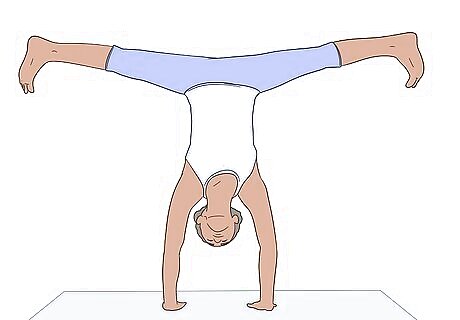
Spread your legs out to help you stay balanced. Before you try to shift onto one arm, split your legs so it’s easier to maintain your balance. Slowly part your legs as far as you comfortably can. Stabilize yourself before you continue. Don’t try to shift onto one arm with your legs together. Otherwise, you’ll likely fall out of your handstand.Variation: Use a wall for support when you’re first getting started. Do your handstand in front of the wall so you can lean against it as needed.
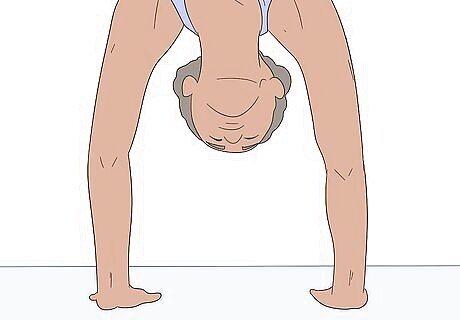
Tighten your core to help you maintain your stability. Your core muscles must stay engaged for you to stay balanced. Squeeze your core tightly to create a strong trunk. If you slacken your muscles, you’ll probably fall over.
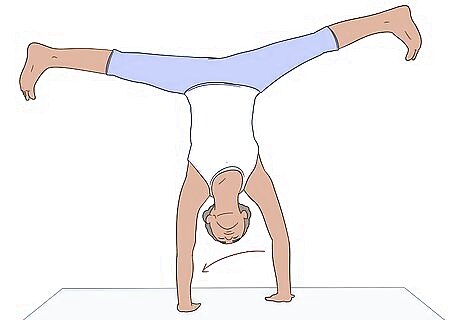
Shift your weight onto your dominant arm. Lean slightly toward your stronger side. Extend your shoulder to push off the floor with your dominant hand. Support all of your weight on your dominant side.
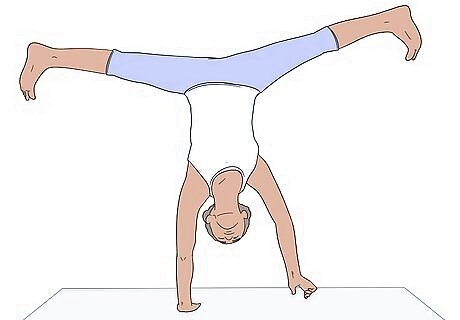
Lift your non-dominant hand off the floor finger-by-finger. Your non-dominant hand will naturally start to rise off the floor as you shift your weight to your dominant arm. To complete the one-armed handstand, slowly lift each of the fingers on your non-dominant hand off the floor. Hold your non-dominant arm out to the side to help you stay balanced. Practice holding your handstand with just your non-dominant fingertips before you lift your entire hand.
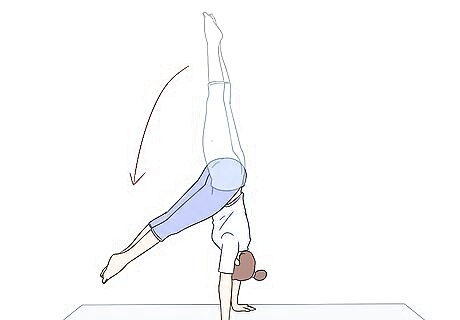
Lower your legs toward the floor to come out of your handstand. When you’re ready to come down, hinge at your waist to drop your legs down toward the ground. Go as slowly as you can so that you can control your fall. Land softly on your feet, then stand up.

















Comments
0 comment